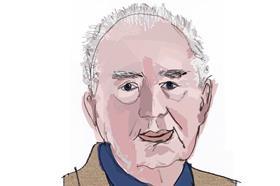British lawyers handling guns in court did rather well in the last century. Marshall Hall pulled off a verdict against the odds twice: the first time re-enacting how, in a case with serious racial undertones, the elegant Parisian lady Madame Fahmy came to shoot her husband, an Egyptian prince, in the Savoy Hotel in 1923.

At the Old Bailey, Hall, crouching and snarling in a darkening courtroom, shocked the jury into an acquittal. At one point he dropped the .32 calibre Browning pistol either accidentally or deliberately in a clatter on the floor.
In 2013, barrister Andrew Rose wrote The Prince, the Princess and the Perfect Murder, showing that Mme Fahmy was far from what she had been portrayed for nearly 100 years. (The ‘Prince’ was the future Edward VIII.)
In his last capital case, in1926, Hall demonstrated how Austin Smith managed to shoot his wife’s lover in a struggle for his gun.
Sir Patrick Hastings had a 100% acquittal rate in gun cases, demonstrating to the satisfaction of the jury how light the trigger pull was on the revolver with which Mrs Elvira Barney shot her lover in 1932. It was said he had a sore finger for three weeks.
Sadly, the ‘Copperhead’ lawyer Clement Vallandigham suffered more than a sore finger. Defending Thomas McGehan in a trial in Lebanon, Ohio in June 1871, based on powder burns, he proved satisfactorily to himself that in a bar room brawl the victim Tom Myers had accidentally shot himself.
Back at his hotel he showed his fellow defence lawyers how he would demonstrate his theory to the jury. Unfortunately, he took a pistol he thought was unloaded, put it in his pocket and, re-enacting the events, snagged what was a loaded gun on his coat, shooting himself in the stomach. He died the next day. McGehan was brought from prison to attend the funeral.
Six months later, with another lawyer running the defence and amid allegations of rigging, the jury accepted Vallandigham’s theory. McGehan was acquitted.































No comments yet